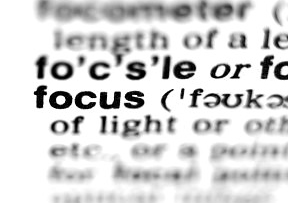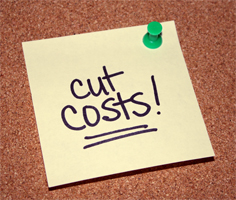DOs and DON’Ts for Effective Trade Show Booths
So in the past few weeks we’ve talked about a myriad of trade show topics: how to entertain attendees, how to develop an effective trade show marketing strategy, tips on how to work your booth, how to reduce costs, and ways to plan before leaving for your trade show. Let’s take a few steps back and determine what are a few of the DOs and DON’Ts of pulling together a successful, enticing tradeshow exhibit.
 Preparing for a trade show, especially for small companies, can be a daunting task. Deciding what to include and how to set up an actual exhibit/display is one of the fundamental decisions you’ll have to make. First step is to contact the show managers and find out the size of the booth you will have, whether there is a wall space for your company sign, if there are electrical outlets available, and any other small items that you might be responsible for supplying.
Preparing for a trade show, especially for small companies, can be a daunting task. Deciding what to include and how to set up an actual exhibit/display is one of the fundamental decisions you’ll have to make. First step is to contact the show managers and find out the size of the booth you will have, whether there is a wall space for your company sign, if there are electrical outlets available, and any other small items that you might be responsible for supplying.
Here are a few other tips to keep in mind when creating your exhibit:
DON’T overstuff it. Product managers might want to display things that represent every brand or product your company offers. Partners might want their logo splashed all over your booth. Keep in mind that sometimes simpler is better. Booths overcrowded with displays, products, stands, etc., turn off prospective attendees and prevent you from quickly communicating why attendees should visit you.
DO simplify your message. Many exhibitors make the mistake of bombarding their booth visitors with marketing slogans. Instead choose the one core message you want to impart to potential customers and stick to that in terms of graphic presentations. Displaying fewer, but larger visual elements in your exhibit will reduce clutter and better garner an attendee’s attention and create a lasting impression.
DO focus on the cream of the crop. Instead of hauling your entire product line to a tradeshow booth and again cluttering your display, overwhelming visitors, and diluting your marketing message, showcase only your new and top-selling products.
DON’T rely on static displays. Any type of motion captures people’s attention as opposed to static displays. You can take advantage of this by playing a looping DVD on a widescreen TV or make use of a rotating display.
DO maintain a small, private area. If your booth is big enough, it’s nice to have a quiet, private area with a table and a few chairs to take attendees or promising prospects that might like to sit down and discuss your company and its product and services in more detail.
DON’T scrimp on carpet. This might sound silly, but after a long day of walking miles and miles on the unforgiving floors of huge exhibit halls, visitors will appreciate booths that have plush, padded carpet. And, so will your booth workers.
Trade Show Design Secrets: Keep It Simple!
What stands out at a major trade show or fair? Bright colors, bold designs, and simplicity. This is not news, yet trade shows remain filled with booths that are too complex and too cluttered – booths that attendees do not recall seeing because they make no impression.
The most common cause of a cluttered booth is trying to accomplish too many objectives. Generally, if you are overly ambitious, you will end up falling short on every goal. But if you are willing to make some choices, your exhibit can be brilliant. Check out Trade Show Exhibit Design: The Creative Brief for some valuable planning tips that will help you to make an impression.
A focused message
 Think about what you really want to communicate with your booth display and write it down. If it is one, focused goal, then you are on the right track. Once you have a singular mission, work with your design team to bring it to life. Focus on your one main message. Carry that message into everything you present at the trade show – your booth, collateral, merchandise presentation, sales pitch, staff clothing, everything.
Think about what you really want to communicate with your booth display and write it down. If it is one, focused goal, then you are on the right track. Once you have a singular mission, work with your design team to bring it to life. Focus on your one main message. Carry that message into everything you present at the trade show – your booth, collateral, merchandise presentation, sales pitch, staff clothing, everything.
Keep your booth open and inviting
Eliminate anything and everything that creates a barrier to attendees or will overwhelm them with unnecessary information. A few examples:
- Be clear and straightforward about your company. Don’t tell your complete corporate history – only what is needed to make the sale.
- Present a few products merchandised to showcase your most important products. A booth packed with a deep product assortment will just become clutter.
- Banner graphics can be great unless they are filled with complex graphic images or too many words and logos. If you want people to actually read what is on your banners, limit the amount of information you put on them.
It all sounds so simple, but choices are always difficult.
To create a singular, power statement you have to be willing to make some hard choices. I usually start with an empty space and challenge myself to only put in what is essential. Maybe the product display should only include your newest products. One large multipurpose element can often replace several small elements and eliminate a lot of clutter. Look for ways to build in storage to hide extra sales literature and other supporting materials.
Be remembered.
Your trade show exhibit will be more effective and more memorable if it makes a clear statement about your company and your products. Question everything and, if something does not support your core message, do not let it into your exhibit.
If you want your trade show booth to be the star of the show, you have to have one message and it has to have a chance to be seen.
Trade Show Exhibit Design: The Creative Brief
When you need to have a new trade show exhibit created, plan to discuss your schedule, budget, exhibit space, how frequently the booth will be used, and if there are any special requirements for the exhibit. If you want to create a breakthrough exhibit, also take the time to put together your creative requirements.
 Even some of my most organized clients rarely organize and formalize their creative requirements before they start working on a new trade show exhibit. They generally start by providing some basic verbal instructions about the design requirements. Then spend a lot of time gathering information in response to questions from the creative team.
Even some of my most organized clients rarely organize and formalize their creative requirements before they start working on a new trade show exhibit. They generally start by providing some basic verbal instructions about the design requirements. Then spend a lot of time gathering information in response to questions from the creative team.
Letting your vendor work solely from verbal input is the best way to waste time and money. Sometimes it results in a flashy but generic exhibit, and communications disconnects. On the other hand, if you work with your design firm to create a formal creative brief, you are well on your way to creating an exhibit that fully represents your brand and engages your target customer, and makes you look like a pro.
Look for a partner who will collaborate with you and create a formal brief – a succinct statement of what you are trying to accomplish and communicate with your new trade show exhibit. Once you have a formal brief, it’s easy to run it by key stakeholders and make sure that you are on the right track. It also serves as a guide for the creative team so that they clearly understand their mission.
Most of what you need to provide is probably readily available. A few phone calls or quick visits with co-workers and you will have most of the answers. The format that you use really doesn’t matter. Just gather the answers to the key questions and work with your exhibit marketing company to create a brief.
Here’s a list of preliminary questions that I have found are a useful starting point:
Brand and Company Mission:
What is your brand position?
What is your corporate mission?
These are usually brief formal statements that are prepared by the Marketing Department.
Background:
What do you want to achieve with the exhibit?
How will you measure the success of your trade show effort?
What’s going on in the market? Any opportunities or problems in the market?
Your Target Customer:
Who is your target customer?
What should be avoided in talking to this audience?
What do they believe about your company before we tell them anything?
Is there an important secondary audience?
The Message:
If you could get one sentence through all the clutter, what would that be?
If they asked you to prove it, how would you do that?
Are there any other major points do you want to communicate?
Be critical and honest about the answers to these questions. It is great to focus on your company’s strengths but it is also important to make sure the creative team knows your company’s weaknesses and challenges.
Once you have the answers, work with your exhibit design firm to develop a creative brief that provides a clear statement of expectations and lay out a clear framework for the creative team. I have found that the most effective creative briefs result from a collaboration between the client and their design team.
Do you have a collaborative relationship with your trade show exhibit design firm? Do you think it matters?
Ways to Slash Trade Show Costs
Trade shows are excellent forums to showcase new products and reach customers and prospects with your marketing message, but they are expensive. Cutting trade shows out of your marketing budget entirely, however, is pound-wise and penny foolish.  Let’s take a look at some ways you can shave costs out of your trade show budget without sacrificing the impact of your exhibit.
Let’s take a look at some ways you can shave costs out of your trade show budget without sacrificing the impact of your exhibit.
Rent instead of own. Some companies get weighed down by the expense of owning their own exhibits; not just the initial expense but the costs associated with storing, shipping, prepping, maintaining, as well material handling expenses once it has been received at the show site.
Bring your own supplies. Renting supplies at a trade show can put a serious crimp in efforts to reduce costs. Though it might seem more cost-efficient to avoid the costs of shipping things such as tables, carpet, chairs, etc., the reality is that you can save by shipping and reusing your own.
Leverage tradeshow materials for other uses. Banners or posters used at trade shows make great visual advertisements in the front window of retail stores. Brochures not given out at shows can double for customer/prospect mailings.
Get handy. One way to save big is to bring your own tools and put your booth staff to work setting up everything that’s not mandated by trade show labor rules.
Negotiate booth rent. Exhibition companies have been hit pretty hard by the recession. What’s bad news for them could be good news for exhibitors. If you’ve exhibited at the same trade show for years, try and renegotiate your booth rent with the tradeshow organizer. Agreeing to sign a multi-year contract might help hasten a deal as organizers are looking to keep you as a long-term exhibitor.
Go smaller. Booth rent accounts for approximately 20% of your total trade show costs, so reducing the size of your booth can have an immediate and big impact on your bottom line.
Ship early. If you are shipping your exhibit or supplies to a show, be sure and plan to ship well ahead of time so you can send all items in the slowest, least expensive way possible. Also, check out whether you can ship some items locally instead of from your location.
Archives
- July 2021
- June 2021
- May 2021
- April 2021
- October 2018
- September 2018
- August 2018
- July 2018
- June 2018
- May 2018
- April 2018
- March 2018
- February 2018
- January 2018
- December 2017
- November 2017
- October 2017
- September 2017
- August 2017
- July 2017
- June 2017
- May 2017
- April 2017
- March 2017
- February 2017
- January 2017
- December 2016
- November 2016
- October 2016
- September 2016
- August 2016
- July 2016
- June 2016
- May 2016
- April 2016
- March 2016
